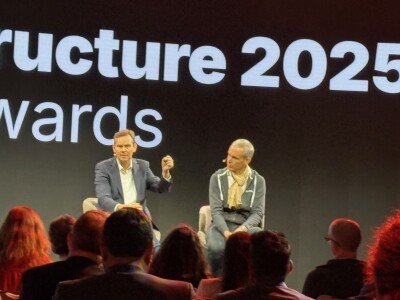Big news hit both the infrastructure and 3D geospatial industries earlier this month when the announcement came down that Bentley Systems was acquiring Cesium for an undisclosed price. It’s a combination of two of the biggest and most influential companies within their industries and signifies the continued and strengthening bond between these two sectors, a coming together that forms the backbone of much of our coverage here at Geo Week News and our content at the annual Geo Week conference. It also continues a broader trend that we’re seeing within all of our industries with increasing collaboration and consolidation within companies.
As one would expect, the acquisition made major waves across the industry with many wondering what it will mean for each company and their companies, to say nothing of the industries as a whole. Perhaps the most pressing question that has been on the mind of many professionals given the ethos of both companies is this: Is the future still open?
Before getting into that big question around openness, though, it’s worth quickly diving into the value the companies foresee from this acquisition. At the highest level, this merging of the companies will be linking Cesium’s open-source 3D software – as well as their SaaS platform, Cesium ion – with Bentley System’s digital twin platform, iTwin. There are a lot of details to dig into with this acquisition and more will certainly come out in the coming months, but here is what Bentley CEO Nicholas Cumins said in the company’s official release of the news.
“A 3D geospatial view is the most intuitive way for owner-operators and engineering services providers to search for, query, and visualize information about infrastructure networks and assets. With the combined capabilities of Cesium and iTwin, infrastructure professionals can make better informed decisions in full 3D geospatial context—all within a single, highly performant environment.”
In addition to that release, Cesium Founder and CEO, and now Bentley Chief Platform Officer, Patrick Cozzi wrote a blog post on Cesium’s website about the move. The entire thing is worth a read, but I’d like to draw attention to one section entitled A Shared Commitment to the Open Ecosystem. This section addresses that previously mentioned concern around the future of openness for Cesium, whose commitment to open source tools and open data has been among its defining features since its founding.

The reasons for that concern are pretty simple, really. Cesium, while no longer a tiny startup, is still a small and private company who was largely able to move within their own vision. Their aforementioned commitment to openness has been commendable, most notably with their 3D Tiles that have become a standard for the Open Geospatial Consortium. Now, they are part of a significantly larger company in Bentley, and one that is publicly traded. In other words, they are not only beholden to their customers and employees, but also to their shareholders.
It’s perfectly fair to be concerned about what this means for the future of open data within the 3D geospatial community, but there are plenty of reasons to be optimistic about this future as well. For one thing, even as a publicly traded and relatively large company, Bentley Systems has been committed to open data as well. It’s something Cozzi mentions in the blog linked above, calling Cesium “kindred spirits with Bentley’s founders,” and noting that Keith Bentley, Bentley Systems’ co-founder and longtime CTO, said on a podcast that “Cesium inspired Bentley to build an open platform for digital twins for infrastructure engineering in the same style of Cesium: open source, open standards, and open APIs.”
And indeed, Bentley’s iTwin platform is built on open APIs with users able to build their own applications on top of the platform. Furthermore, in our own conversation with Keith Bentley last year prior to his official retirement from the company, he stated multiple times that one of the things he’s excited about for the future of the company is iTwin and what having an open platform can bring in.
Even looking outside of this specific acquisition, we are seeing companies even larger than Bentley embracing the value of open data. Take, for example, the Overture Maps Foundation. We’ve covered this group frequently at Geo Week News, and it includes some of the biggest companies in the world – Meta, Amazon, and Microsoft, among others – coming together to create an open source map. Similarly, companies like NVIDIA, Autodesk, Apple, Pixar, and Adobe came together to form the Alliance for OpenUSD, creating an open standard for sharing 3D data.
This trend doesn’t seem to be going away, and it makes sense given the shifting landscape in the technology industry. Simply put, tools are becoming more complex as technology advances, and it’s increasingly difficult for any single company to master these tools on their own. Instead, we are seeing even the largest companies in the world come together for open tools from which they can all benefit. In this case, Bentley is clearly seeing a greater focus on spatial data within the infrastructure sector and has added expertise in adding that geospatial visualization. Given that, it doesn’t feel overly naive to believe that this acquisition will not have too much of an effect on open data within the geospatial industry.
To be clear, that’s also not to say we’re heading for utopia with data. Things will certainly change for both Cesium and Bentley as a result of this deal; there would be no point in making the acquisition if everything were to stay the same. It’s just a matter of whether or not the changes will be all positive or negative. As always, the answer is almost certainly somewhere in the middle. But for the specific question around the future of open data, I see plenty of evidence from both the companies involved in this deal and the broader trends within the tech space to remain cautiously optimistic.





